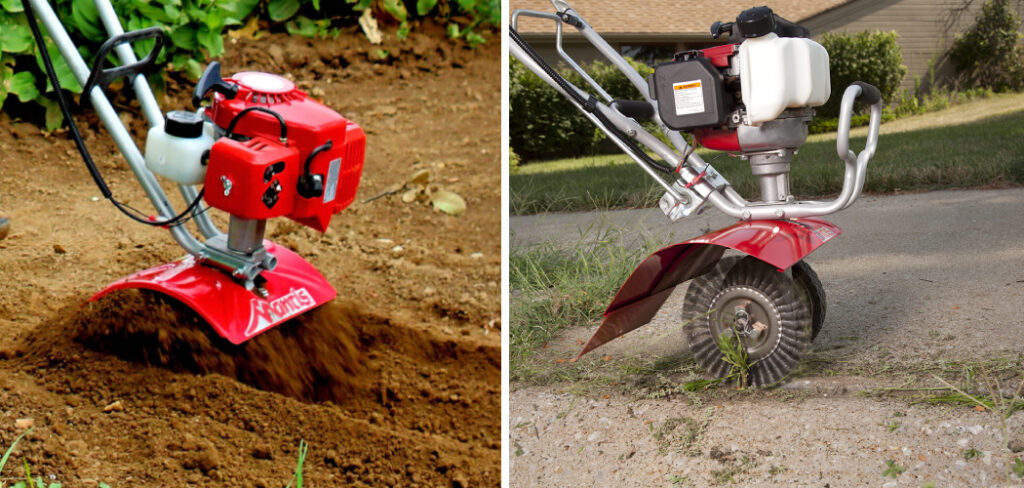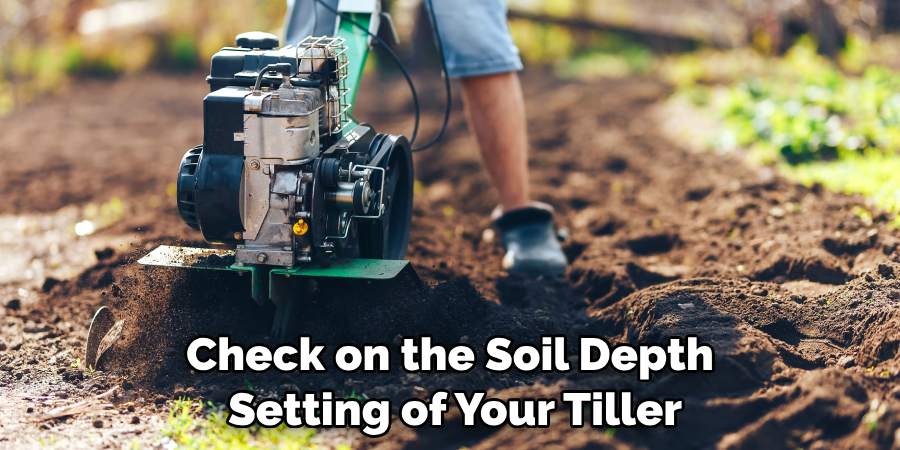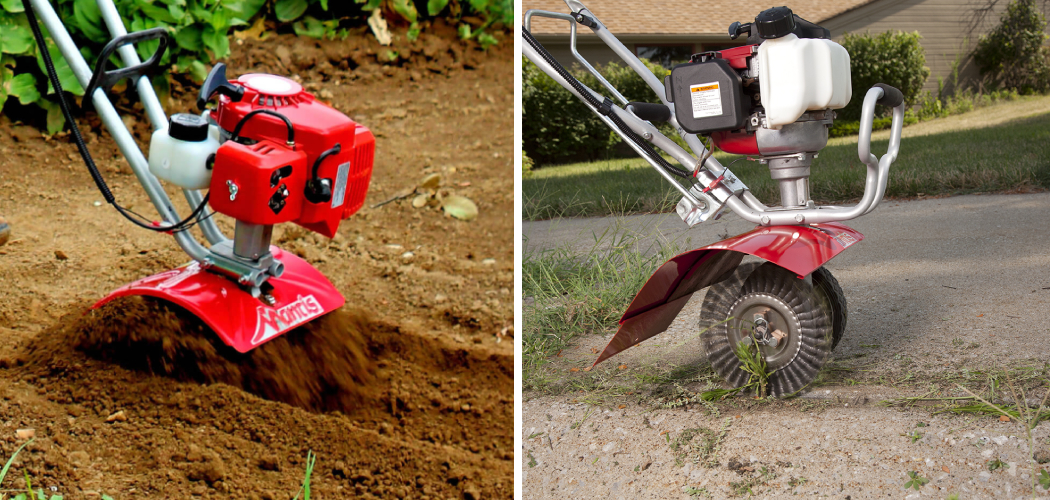Are you ready to reinvigorate your garden with a lightweight yet powerful Mantis Tiller? Get the most out of your tiller and make gardening easier with these tips for using a Mantis Tiller.

If you’re looking for a tool that will make quick work of tilling your garden, the Mantis Tiller is an excellent choice. It is lightweight and maneuverable, and its high-torque motor makes light work of even the toughest soil. In this blog post, we’ll explain how to use a Mantis Tiller so that you can get started gardening with confidence!
Read on to learn about getting set up safely, operating instructions to ensure efficient fuel and energy use, and maintenance tips to help keep your tiller in top condition.
What Will You Need?
Before you get started, there are a few things you’ll need to have on hand:
- Safety goggles or glasses and ear protection
- A fuel container
- The Mantis Tiller instruction booklet
- A set of fresh spark plugs.
Now that you’ve assembled the necessary supplies, it’s time to prepare the Mantis Tiller for use.
10 Easy Steps on How to Use a Mantis Tiller
Step 1. Setup and Preparation:
First, ensure the tiller is in a safe location, away from any debris or other obstacles that could interfere with its operation. Check the fuel tank to ensure it is full of fresh gasoline and no more than a 50:1 ratio of oil has been added (check the instruction booklet for more information). Make sure that the spark plug is connected and in working order.
Step 2. Start the Engine:
Now it’s time to start the engine! To do this, simply turn the ignition key to “On” and push down on the recoil button until you feel resistance, then pull sharply. The Mantis Tiller should start immediately. If it doesn’t, check that all connections are secure and refer to your manual for troubleshooting help.

Step 3. Adjusting Settings & Controls:
Once your tiller has started, take a few moments to adjust all of its settings as needed according to your preferences and soil conditions. This includes adjusting depth controls, speed settings, and power selection. Consult the instruction booklet for details.
Step 4. Position the Tiller:
Now it’s time to position your tiller where you want to begin tilling. Make sure to keep the handle pointed towards you at all times so that you can maintain control over its direction while avoiding any potential hazards from flying debris or stones thrown up by the blades. Keep a firm grip on the handle and throttle lever as you move the tiller forward.
Step 5. Begin Tilling:
Once everything is securely in place, pull on the handlebar and engage the engine with a light touch of the throttle lever. Start slowly and gradually increase speed until you’re comfortable with how it feels. Depending on soil conditions, you may also need to adjust depth or power settings as desired. Otherwise, move the tiller forward in a straight line and let it work!
Step 6. Clearing Debris:
Occasionally check for any stones or other debris thrown up by the blades and clear away from your path if needed. This will ensure that your tiller can operate without interruption or damage. Remember to check the area behind you, too, as stones may have also been thrown in that direction.
Step 7. Finishing Up:
Once you’ve finished tilling, turn off the engine of your Mantis Tiller and allow it to cool down before storing away safely. If there’s any leftover fuel in the tank, make sure to empty this and dispose responsibly according to local regulations. Remember that gasoline should never be poured directly onto the ground, so it’s best to use a funnel or other container to prevent any potential spills or accidents.

Step 8. Cleaning & Maintenance:
After each use, take some time to give your tiller a quick clean and inspect it for any potential damage. Check the blades for sharpness and ensure all components are securely in place. Refer to your instruction booklet for more information if any parts require replacing or repairing.
Step 9. Storing Your Tiller:
When not in use, safely store your tiller away in a dry location from direct sunlight. Make sure to keep the spark plug disconnected while it’s stored away, and fill up the fuel tank with fresh gasoline before each use. Keep an eye on the oil level, too, as this may need topping up occasionally if you notice performance levels beginning to decrease (check the manual for details).
Step 10. Enjoy Gardening!
Now you’re ready to enjoy the fruits of your labor! Remember to refer to this guide whenever you need a refresher on using a Mantis Tiller and keep it in top condition for years of happy gardening. Remember to take regular breaks, use safety equipment whenever necessary and stay safe while gardening!
By following these simple steps, you’ll be well on your way to tilling your garden with ease! With a Mantis Tiller, you can make quick work of even the toughest soil while saving energy and time. No more back-breaking labor – just grab your tiller and get to work!
5 Additional Tips and Tricks

- If you’re working in a small space, keep your tiller at an angle of no more than 45 degrees. This will help keep your tiller balanced and prevent it from toppling.
- If you use the Mantis tiller in a yard, wear protective gear such as long pants, closed-toed shoes, and gloves. This will protect you from dust or debris that may become airborne while using the tiller.
- Be sure to check on the soil depth setting of your tiller before digging into any surface. If there is too much soil thickness for your tiller model, you risk damaging its blades and motor components.
- When using a Mantis Tiller with an attached cultivator attachment, be sure to use short strokes when cultivating around flowers or other delicate plants. This will help to prevent damaging the roots of the plant.
- When using a Mantis Tiller, starting at slow speeds and gradually increasing as needed for soil type and density is important. This will help you better grip the ground and prevent you from tearing up chunks of uncultivated soil.
- By following these tips and tricks, you can successfully use a Mantis Tiller to cultivate your lawn or garden easily and properly! Your Mantis Tiller can provide many years of effective use with proper care and maintenance.
5 Things You Should Avoid
- Never use a Mantis tiller in wet soil or standing water. This could cause the motor and blades to become damaged by excessive moisture or debris.
- Do not attempt to till an area with more than 8 inches of soil depth. The maximum capacity for most models is approximately 6-8 inches.
- Avoid working around underground power lines, cables, or other such utilities, as this could be dangerous.
- Do not use your tiller in areas where you may hit stones, roots, bricks, or any other hard objects, as this can damage your tiller’s blades and motor components.
- Be careful when operating your tiller near people, pets, or other animals. Injuries may occur if they come into contact with the spinning blades of your tiller.
By avoiding these things and following the tips and tricks above, you should be able to safely and effectively use a Mantis Tiller for all of your gardening needs! With regular maintenance and proper care, your tiller will provide many years of reliable service.
What Oil is Best for a Tiller?
The best oil for a Mantis tiller is SAE30 Non-detergent or synthetic motor oil. Check the tiller’s manual before use for specific oil types and weight recommendations. Also, always use fresh oil when filling or replenishing your tiller. This will help prevent any build-up of debris or sludge inside the engine, which can cause it to become clogged and not function properly.

If you are still unsure about what oil to use in your Mantis Tiller, contact your local Mantis service center for advice and assistance.
By following these tips and tricks and understanding what type of oils work best for your Mantis tiller, you can be sure to get the most out of your gardening tool!
Conclusion
You can easily tackle any outdoor gardening or landscaping project with a mantis tiller. Read over the operator’s manual carefully and practice using the tiller before tackling big projects. You’ll be surprised how much time and effort you save when you equip yourself with the right tool for the job. As you become more comfortable with your mantis tiller, you can begin experimenting with larger, more complex projects.
With the right skill set and background knowledge of garden machinery, you can create beautiful gardens that fit your unique style. No matter what type of project you plan on pursuing, a mantis tiller is an essential piece of equipment that can make life easier and help take your outdoor project to a whole new level.
Hopefully, the article on how to use a mantis tiller has given you the basic knowledge and tips you need to start your next outdoor project. So go ahead and give it a try – your hard work will pay off in the end!
About
Outdoor Fixes is a distinguished figure in the world of Diy design, with a decade of expertise creating innovative and sustainable Diy solutions.
His professional focus lies in merging traditional craftsmanship with modern manufacturing techniques,
fostering designs that are both practical and environmentally conscious. As the author of diy,
outdoorfixes delves into the art and science of outdoorfixes-making, inspiring artisans and industry professionals alike.
Education RMIT University
(Melbourne, Australia) Associate Degree in Design (Outdoor Fixes) Focus on sustainable design, industry-driven projects,
and practical craftsmanship. Gained hands-on experience with traditional and digital manufacturing tools, such as CAD and CNC software.
Nottingham Trent University
(United Kingdom) Bachelor’s in outdoorfixes.com and Product Design (Honors) Specialized in product design with a focus on blending creativity with production
techniques. Participated in industry projects, working with companies like John Lewis and Vitsoe to gain real-world insights.
Publications and Impact
In diy, Outdoor Fixes his insights on indoor design processes, materials, and strategies for efficient production.
His writing bridges the gap between artisan knowledge and modern industry needs, making it a must-read for both budding designers and seasoned professionals.

